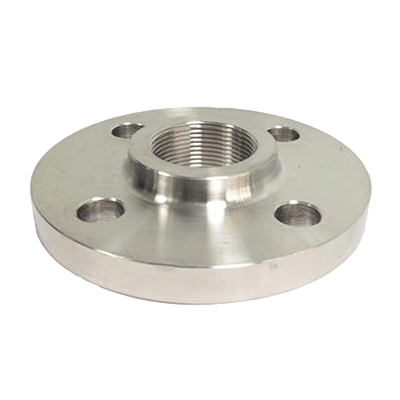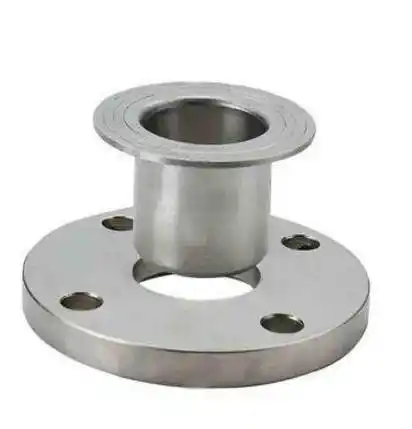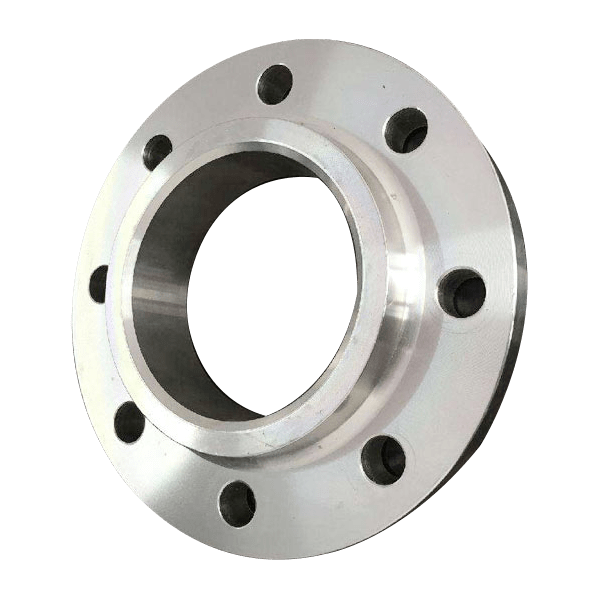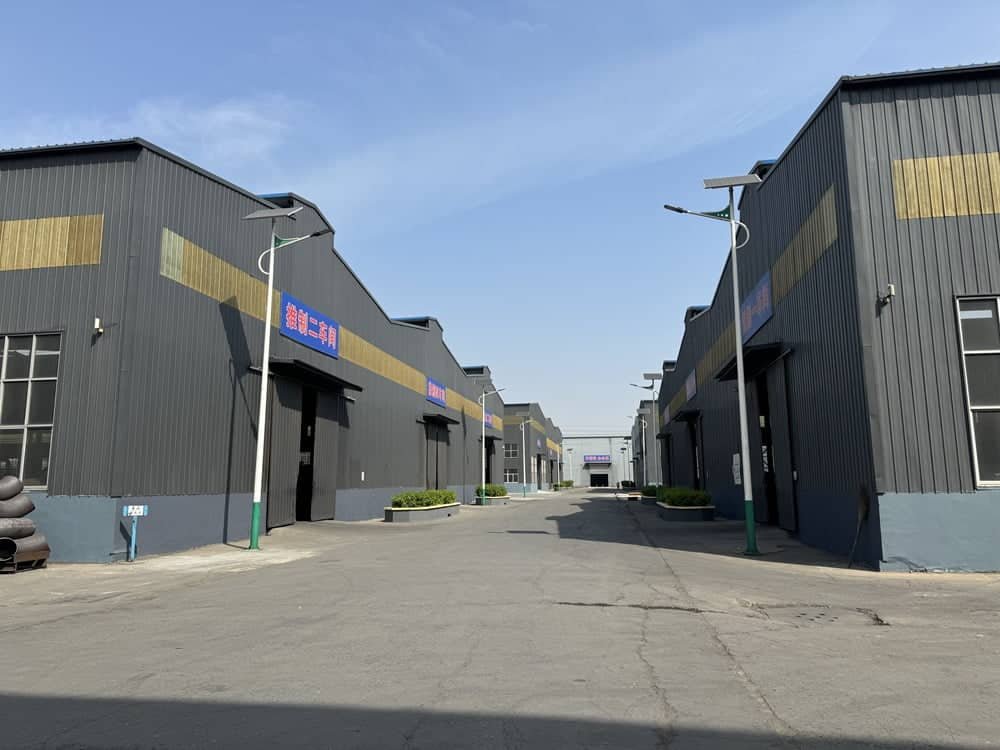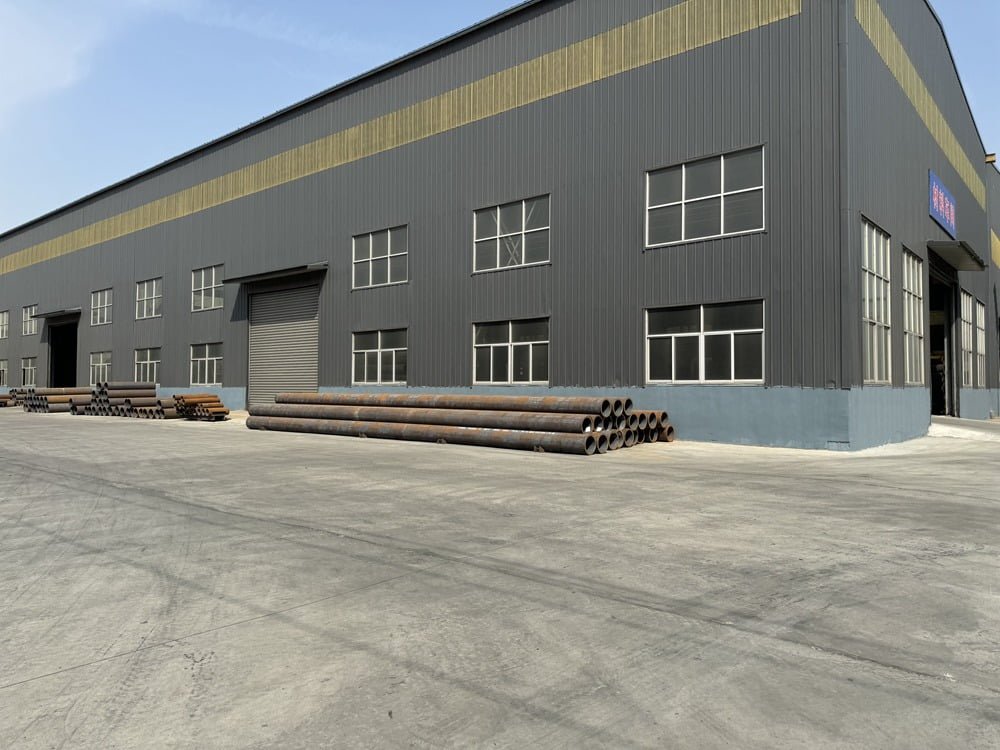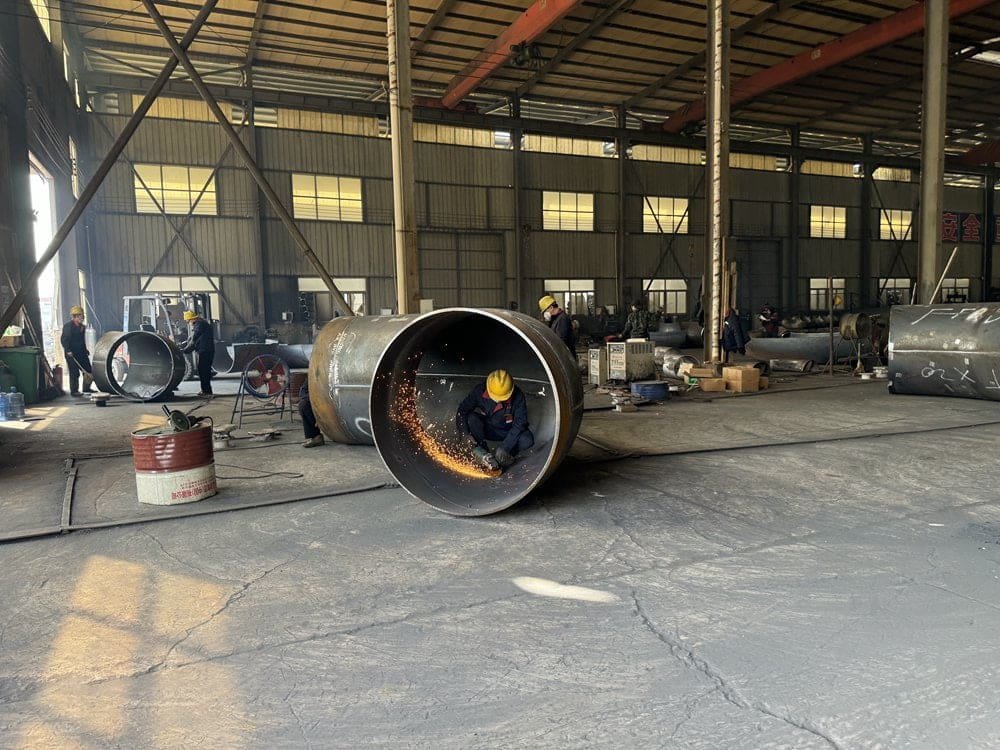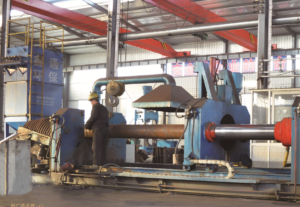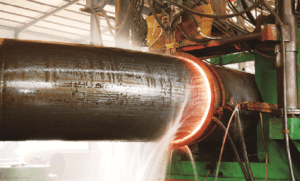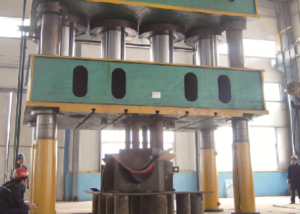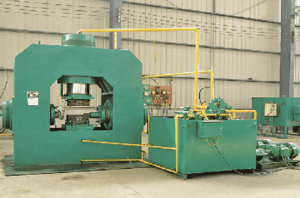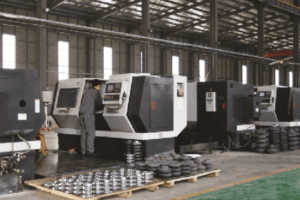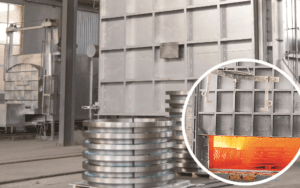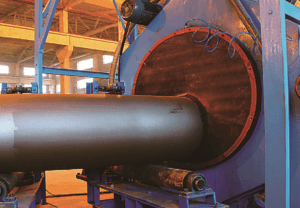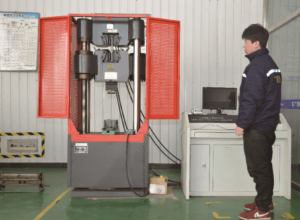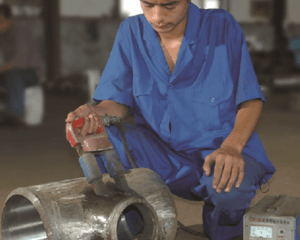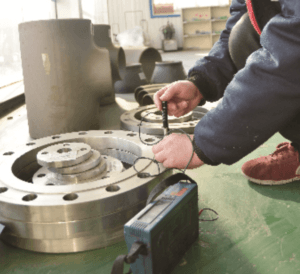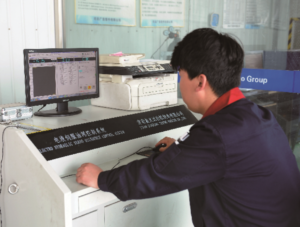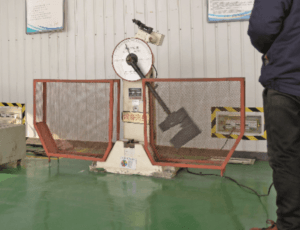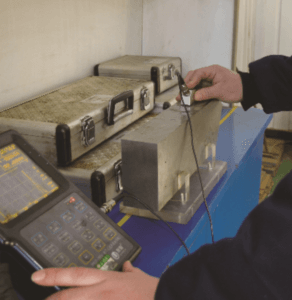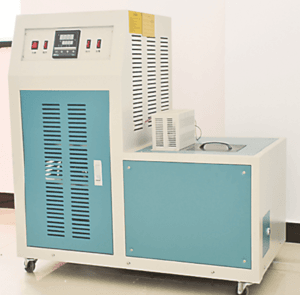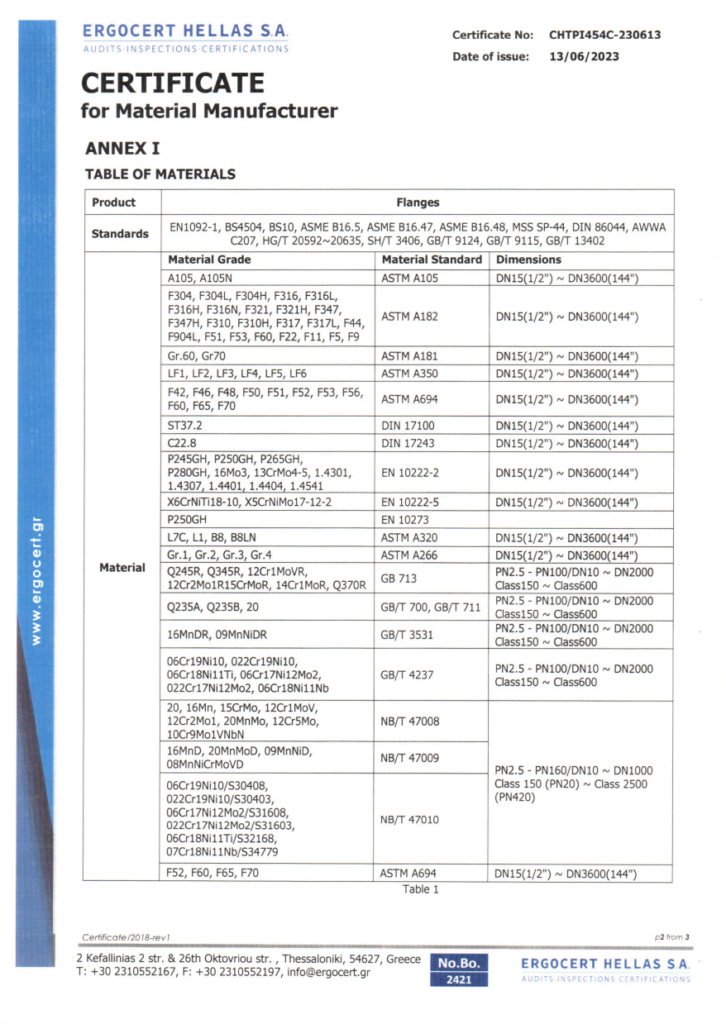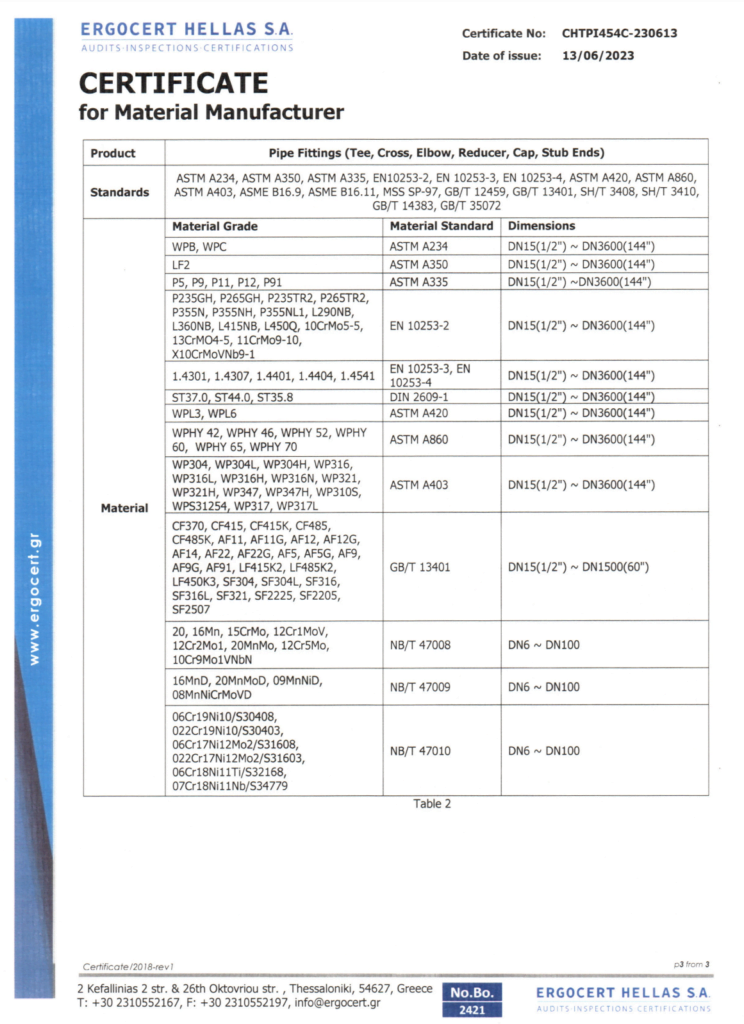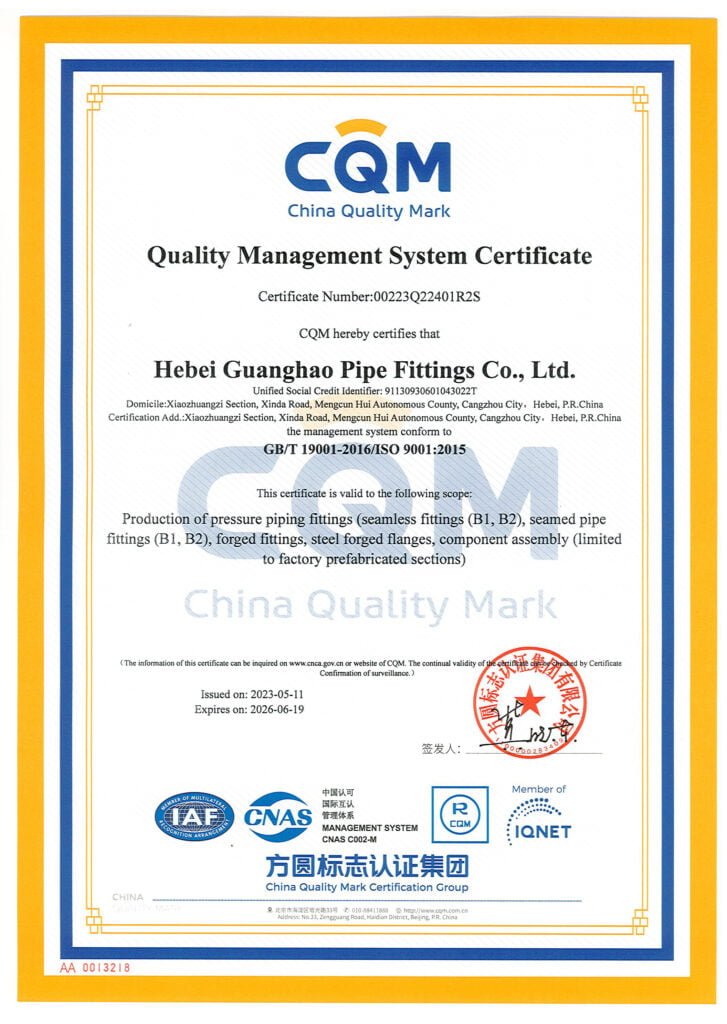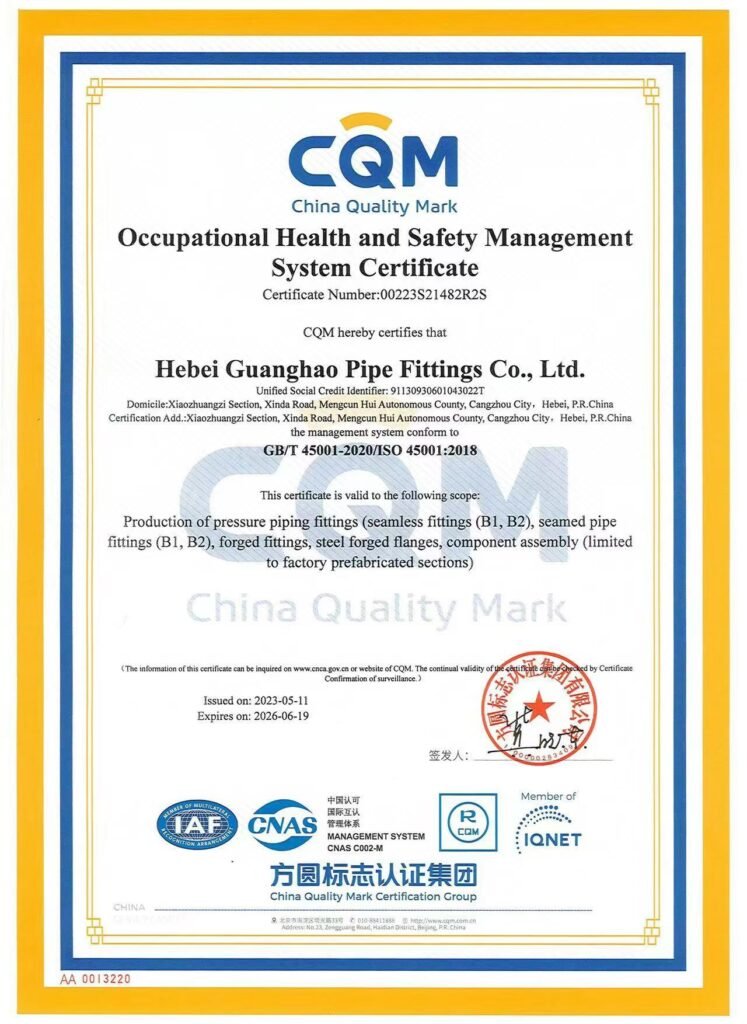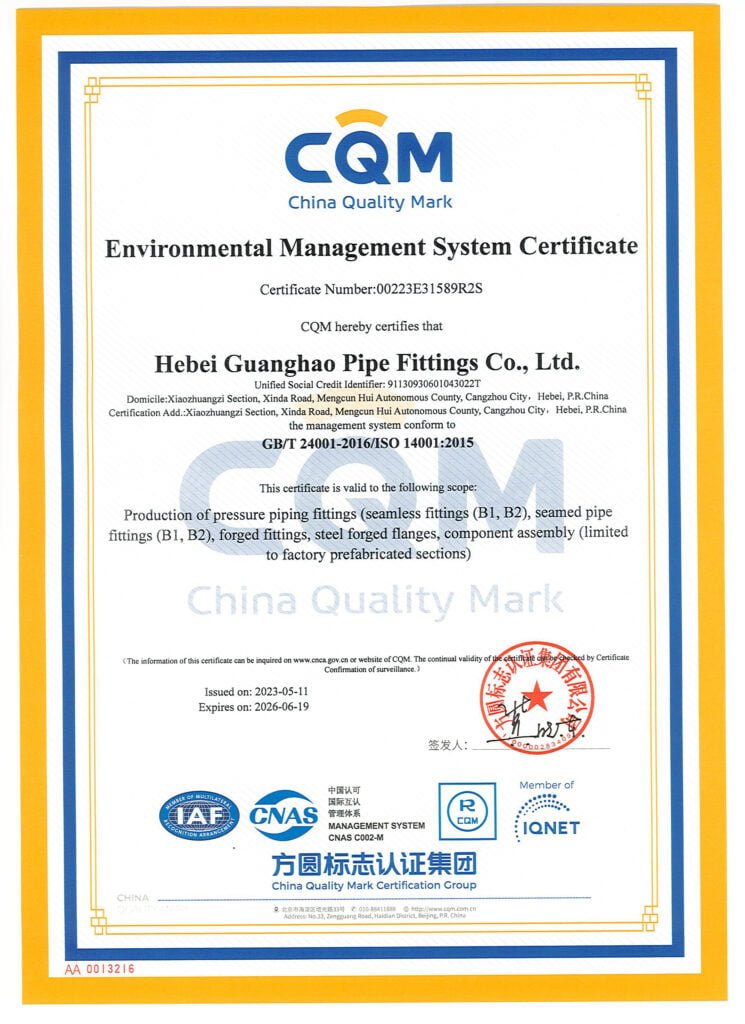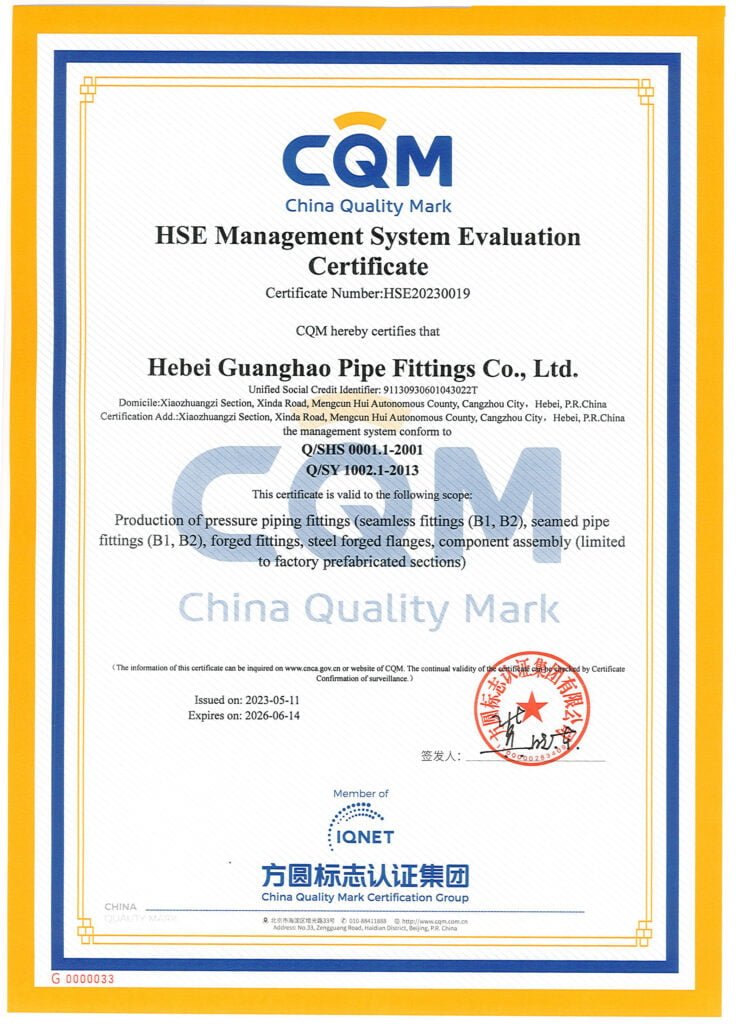Carbon steel flanges
Carbon steel flanges and end flange connectors are essentially made of carbon steel. Common standards include ASTM A694, ASTM A350, ASTM A105N (SA105N), MSS SP-44, DIN 2533. The pressure ratings available are from Class 150 to Class 2500. Flanges made from carbon steel contain between 0.05% and 2.1% carbon by weight in their chemical composition. The carbon content of A105 can vary, with the maximum permissible percentage composition being 0.35.
As the carbon content increases, the steel is hardened and increases in strength through heat treatment processes. Many common treatment techniques in the industry are quenching, tempering, and normalizing. As carbon steel is treated, it becomes less ductile and less brittle. This makes forming and welding slightly more difficult, but it is generally considered a worthwhile trade-off in field service to create the necessary weld seal.
YANHAO is a manufacturer, supplier, and exporter of Carbon Steel Flanges, Carbon Steel Flange Manufacturers offers CS Flanges that are durable and have excellent corrosion resistance. There are different types of cryogenic carbon steel flanges; their size and surface finish can be customized by the manufacturer based on the application requirements. Normalized carbon steel flanges have enhanced ductility and toughness.
Our Supply Range
We provide Carbon steel flanges of various standards, such as ASME/ANSI B16.47, B16.5, EN standards, etc. We also provide customized Carbon steel flanges products.
As a company with 25 years of flange production experience, we support all types of flanges and can give you the best product quality at the most reasonable price.
Please enjoy a copy of our online fashion catalog:
Our stock range of Carbon steel flanges
Carbon Steel Flanges Dimensions
| NPS | O | T1 | R | X | No.2/Dia.of Holes | Bolt Circle Dia | L21 | H | B23 | L | B | r | L34 | B3 | D |
|---|---|---|---|---|---|---|---|---|---|---|---|---|---|---|---|
| 1/2 | 3.50 | 0.44 | 1.38 | 1.19 | 4-0.62 | 2.38 | 1.88 | 0.84 | 0.62 | 0.62 | 0.88 | 0.12 | 0.62 | 0.90 | 0.38 |
| 3/4 | 3.88 | 0.50 | 1.69 | 1.50 | 4-0.62 | 2.75 | 2.06 | 1.05 | 0.82 | 0.62 | 1.09 | 0.12 | 0.62 | 1.11 | 0.44 |
| 1 | 4.25 | 0.56 | 2.00 | 1.94 | 4-0.62 | 3.12 | 2.19 | 1.32 | 1.05 | 0.69 | 1.36 | 012 | 0.69 | 1.38 | 0.50 |
| 1-1/4 | 4.62 | 0.62 | 2.50 | 2.31 | 4-0.62 | 3.50 | 2.25 | 1.66 | 1.38 | 0.81 | 1.70 | 0.19 | 0.81 | 1.72 | 0.58 |
| 2-1/2 | 7.00 | 0.88 | 4.12 | 3.56 | 4-0.75 | 6.50 | 2.75 | 2.88 | 2.47 | 1.12 | 2.94 | 0.31 | 1.12 | 2.97 | 0.75 |
| 3 | 7.50 | 0.94 | 5.00 | 4.25 | 4-0.75 | 6.00 | 2.75 | 3.50 | 3.07 | 1.19 | 3.57 | 0.38 | 1.19 | 3.60 | 0.81 |
| 3-1/2 | 8.50 | 0.94 | 5.50 | 4.81 | 8-0.75 | 7.00 | 2.81 | 4.00 | 3.55 | 1.25 | 4.07 | 0.38 | 1.25 | 4.10 | 0.88 |
| 4 | 9.00 | 0.94 | 6.19 | 5.31 | 8-0.75 | 7.50 | 3.00 | 4.50 | 4.03 | 1.31 | 4.57 | 0.44 | 1.31 | 4.80 | 0.94 |
| 5 | 10.00 | 0.94 | 7.31 | 6.44 | 8-0.88 | 8.50 | 3.50 | 5.56 | 5.05 | 1.44 | 5.66 | 0.44 | 1.44 | 6.69 | 0.94 |
| 6 | 11.00 | 1.00 | 8.50 | 7.56 | 8-0.88 | 9.50 | 3.50 | 6.63 | 6.07 | 1.56 | 6.72 | 0.50 | 1.56 | 6.75 | 1.06 |
| 8 | 13.50 | 1.12 | 10.62 | 9.69 | 8-0.88 | 11.75 | 4.00 | 8.63 | 7.98 | 1.75 | 8.72 | 0.50 | 1.75 | 8.75 | 1.25 |
| 10 | 16.00 | 1.19 | 12.75 | 12.00 | 12-1.00 | 14.25 | 4.00 | 10.75 | 10.02 | 1.94 | 10.88 | 0.50 | 1.94 | 10.92 | 1.31 |
| 12 | 19.00 | 1.25 | 15.00 | 14.38 | 12-1.00 | 17.00 | 4.50 | 12.75 | 12.00 | 2.19 | 12.88 | 0.50 | 2.19 | 12.92 | 1.56 |
| 14 | 21.00 | 1.38 | 16.25 | 15.75 | 12-1.12 | 18.75 | 5.00 | 14.00 | 13.25 | 2.25 | 14.14 | 0.50 | 3.12 | 14.18 | 1.63 |
| 16 | 23.50 | 1.44 | 18.50 | 18.00 | 16-1.12 | 21.25 | 5.00 | 16.00 | 15.25 | 2.50 | 16.16 | 0.50 | 3.44 | 16.19 | 1.75 |
| 18 | 25.00 | 1.56 | 21.00 | 19.88 | 16-1.25 | 22.75 | 5.50 | 18.00 | 17.25 | 2.69 | 18.18 | 0.50 | 3.81 | 18.20 | 1.94 |
| 20 | 27.50 | 1.69 | 23.00 | 22.00 | 20-1.25 | 25.00 | 5.69 | 20.00 | 19.25 | 2.88 | 20.20 | 0.50 | 4.06 | 20.25 | 2.13 |
| 22 | 29.50 | 1.81 | 25.25 | 24.25 | 20-1.38 | 27.25 | 5.88 | 22.00 | 21.25 | 3.13 | 22.22 | 0.50 | 4.25 | 22.25 | 2.38 |
| 24 | 32.00 | 1.88 | 27.25 | 26.12 | 20-1.38 | 29.50 | 6.00 | 24.00 | 23.25 | 3.25 | 24.25 | 0.50 | 4.38 | 24.25 | 2.50 |
Carbon Steel Flanges Standards / Specifications
| Standards | Types | Pressure Class |
|---|---|---|
| ASME/ANSI B 16.5 | Threaded Flange, Ring Type Joint Flange, Blind Flange, Welding Neck Flange, Slip on Flange,High Hub Blind Flange, Socket Weld Flange, Lap Joint Flange | 150, 300, 400, 600, 900, 1500, 2500 |
| ASME/ANSI B 16.47 | Blind Flange [Series A & B], Welding Neck Flange | 75, 150, 300, 400, 600, 900 |
| ASME/ANSI B 16.36 | Slip on Flange, Welding Neck Flange, Threaded Flange | 300, 400, 600, 900, 1500, 2500 |
| DIN FLANGES | DIN 2527, 2566, 2573, 2576, 2641,2642, 2655, 2656, 2627, 2628, 2629, 2631, 2632, 2633, 2634, 2635, 2636, 2637,2638, 2673 | PN 6 TO PN 100 |
| BS 4504 SEC 3.1 | Welding Neck Flange, Hubbed Slip on Flange, Hubbed Threaded Flange, Lapped Pipe End Flange, Plate Flange, Loose Plate Flange, Loose Plate With Weld Neck Flange, Blank Flange | PN 2.5 TO PN 40 |
| BS 4504[PART 1] | Plate Flange, Loose Plate With Weld On Plate Collar, Blank Flange, Welding Neck Flange, Hubbed Slip-On Hubbed Threaded | PN 2.5 TO PN 400 |
| BS 1560 BOSS | Blind Flange, Screwed Boss Flange, Lapped FlangeWelding Neck Flange, Socket Welding Flange, Slip-On Flange | 150, 300, 400, 600, 900, 1500, 2500 |
carbon steel Flanges pressure rating(A105 / A350 LF2 / A350 LF3 / A350 LF6)
| Temperature (F°) | 150 | 300 | 400 | 600 | 900 | 1500 | 2500 |
|---|---|---|---|---|---|---|---|
| -20 to 100 | 285 | 740 | 985 | 1480 | 2220 | 3705 | 6170 |
| 200 | 260 | 680 | 905 | 1360 | 2035 | 3395 | 5655 |
| 300 | 230 | 655 | 870 | 1310 | 1965 | 3270 | 5450 |
| 400 | 200 | 635 | 845 | 1265 | 1900 | 3170 | 5280 |
| 500 | 170 | 605 | 805 | 1205 | 1810 | 3015 | 5025 |
| 600 | 140 | 570 | 755 | 1135 | 1705 | 2840 | 4730 |
| 650 | 125 | 550 | 730 | 1100 | 1650 | 2745 | 4575 |
| 700 | 110 | 530 | 710 | 1060 | 1590 | 2655 | 4425 |
| 750 | 95 | 505 | 675 | 1015 | 1520 | 2535 | 4230 |
| 800 | 80 | 410 | 550 | 825 | 1235 | 2055 | 3430 |
| 850 | 65 | 320 | 425 | 640 | 955 | 1595 | 2655 |
| 900 | 50 | 230 | 305 | 460 | 690 | 1150 | 1915 |
| 950 | 35 | 135 | 185 | 275 | 410 | 685 | 1145 |
| 1000 | 20 | 85 | 115 | 170 | 255 | 430 | 715 |
Related FAQ about Carbon Steel Flanges
Customized Carbon Flanges Process
The following options are for you to customize. If you don’t have a design drawing, you can also consult our engineers and let us help you draw it.
size
Specified pipeline size, including flange ID and OD, thickness, bolt hole diameter, bolt hole distance, etc.
Material
Using specified material suitable for pipeline engineering according to your requirements.
Shape
can be customized with irregular flanges such as square flanges and conical flanges, etc.
Connection
Threaded connection, welding connection, socket welding connection, etc., which can be selected.
Special Treatment
Special treatments such as surface coatings and anti-corrosion can be made according to your needs.
The customization process for flanges is generally as follows:
requirements
Confirmation
Communicate in detail to determine the requirements for flange size, material, pressure, connection method, etc.
Design drawings
Our professional engineers will design flange drawings for you. The drawings will specify the size, shape, thickness, etc. of the flange in detail.
Choose materials
Select suitable flange materials according to the requirements of the engineering project.
Customer confirmation
Send detailed information, such as the designed drawings and materials, to the customer for confirmation.
Processing sample
To ensure accuracy, first produce a sample according to the drawings and selected materials and send it to the customer for trial confirmation.
Production of bulk goods
After confirming the accuracy of the samples, proceed with mass production.
More reading:
About YANHAO
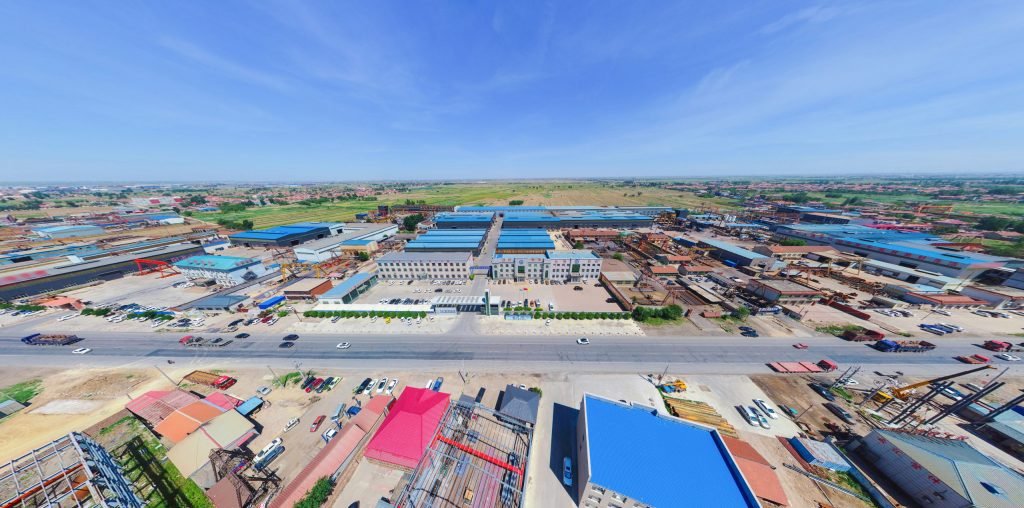
YANHAO is a China Flange Manufacturer located in Hebei Province, China. It is one of the few professional Flange suppliers in China.
We have many years of experience in flange production and have multiple flange production lines. We have sufficient stock of raw materials, rich inventory, fast delivery, and can ship within three days. At the same time, the price is affordable. You are welcome to consult and purchase!
In addition, we can provide a variety of customized flanges and pipe fittings. Customers can give drawings or samples, and our company will produce them to fit your specific requirements.
Our company was founded in 2000 and has more than 300+ employees, including 85+ middle and senior engineering and technical personnel. Our company has a number of production lines and covers an area of 150,000 square meters and a building area of 30,000 square meters.
300+
Number Of Workers
85+
Mid&Senior Engineers
150,000
Square Meters of Area
25+
Years of Experience
Our Production Line
Our company has 8 pipe fitting production lines and 5 flange production lines. It has a full set of medium-frequency elbow hot-pushing machines, hot-die presses for reducers, cold-extrusion hydraulic presses for tees, forging hammers, vertical lathes, drilling machines, and other process-forming and mechanical processing equipment.
Among them, the Φ1020 mm large-diameter medium-frequency hydraulic pushing machine, Φ1420 mm large-diameter medium-frequency bending machine, and Φ2438 mm 4,000-ton large hot-die press have an annual production capacity of more than 80,000 tons.
8
Pipe Fitting Production Lines
5
Flange Production Lines
80,000 tons
Annual Production Capacity
Quality Testing & Certificates
Our company is also equipped with a full set of physical and chemical testing, including spectrometer direct reading, non-destructive testing, heat treatment, water pressure testing, and other product quality testing equipment, providing a reliable guarantee for the production of high-quality products.



